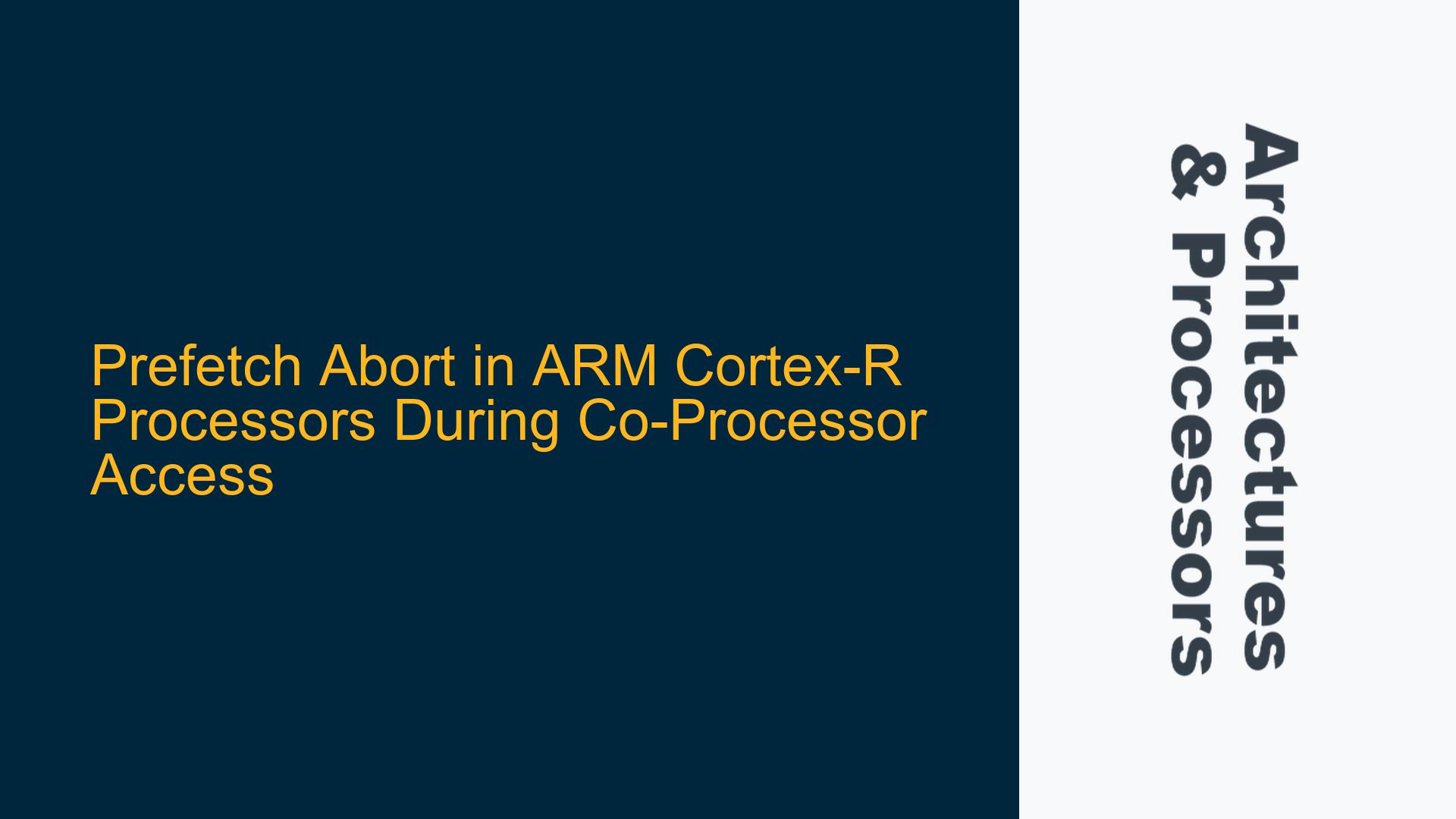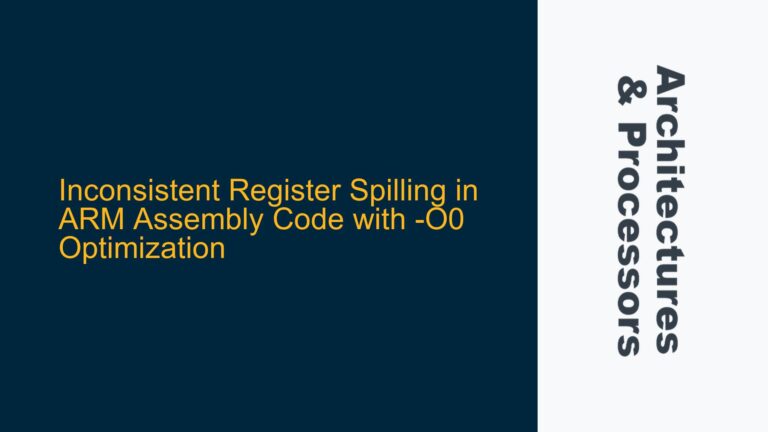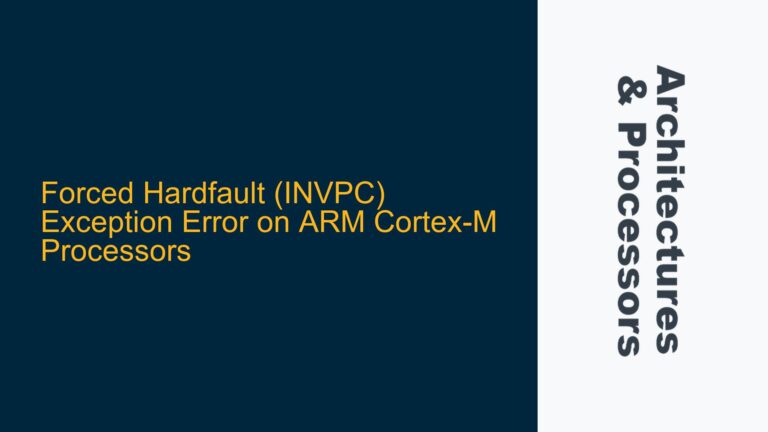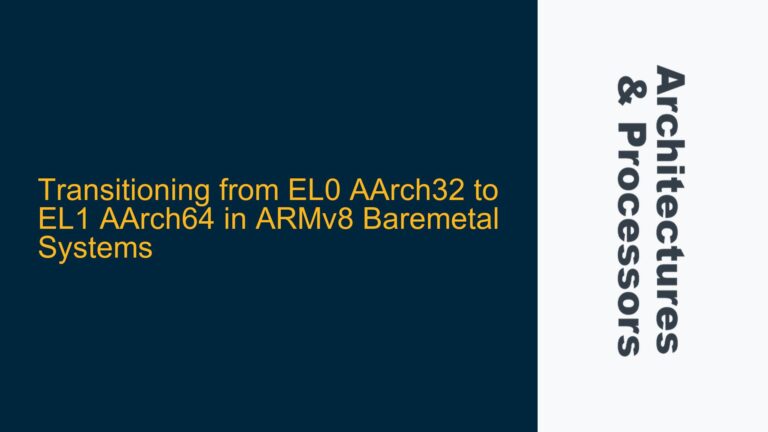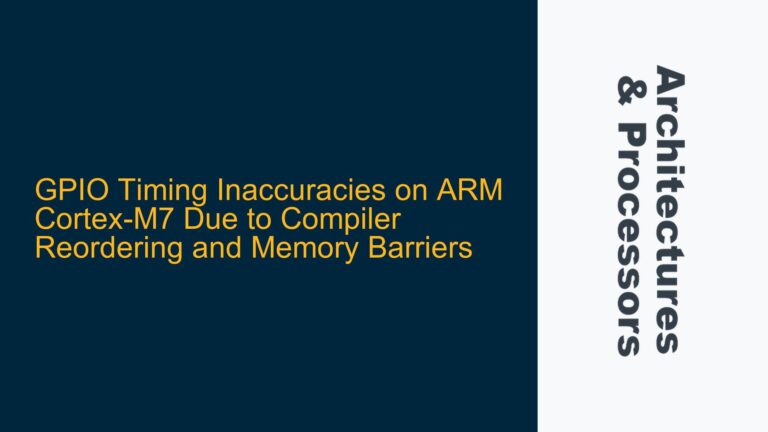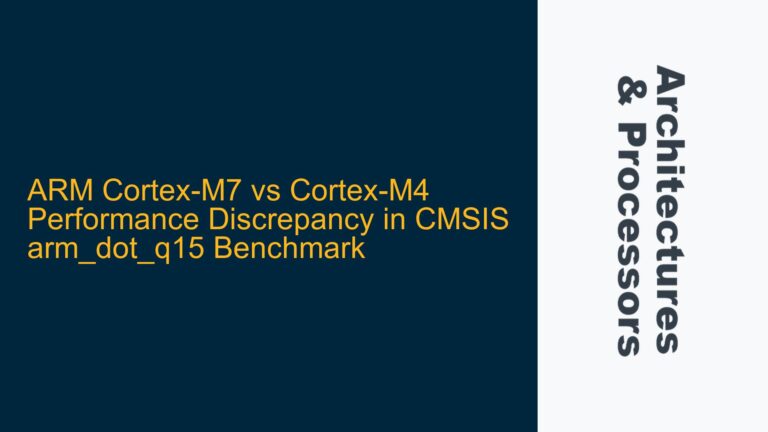ARM Cortex-R Prefetch Abort During CP15 Cache Type Register Access
Prefetch aborts in ARM Cortex-R processors are critical exceptions that occur when the processor attempts to execute an instruction from an invalid or inaccessible memory location. In this specific case, the prefetch abort is triggered during an attempt to access the Cache Type Register (CTR) using the co-processor instruction MRC p15, 0, <Rd>, c0, c0, 1. This instruction is part of the ARMv7-R architecture’s system control coprocessor (CP15) interface, which is used to configure and query system features such as caches, memory management, and other processor-specific functionalities.
The Cache Type Register provides detailed information about the cache architecture, including cache line size, associativity, and the presence of unified or separate instruction and data caches. Accessing this register is a common operation during system initialization or when implementing cache management routines. However, improper handling of co-processor instructions or misconfigured memory regions can lead to prefetch aborts, halting normal program execution.
Understanding the root cause of this issue requires a deep dive into the ARM Cortex-R architecture, the role of CP15, and the specific conditions under which prefetch aborts occur. The Cortex-R family is designed for real-time applications, emphasizing deterministic behavior and high reliability. As such, any exception, including prefetch aborts, must be thoroughly investigated to ensure system stability.
Misconfigured Memory Permissions and Co-Processor Access Rights
One of the primary causes of prefetch aborts during co-processor access is misconfigured memory permissions or insufficient access rights to the CP15 registers. ARM processors implement a privilege model that restricts certain operations to specific processor modes. For example, accessing CP15 registers typically requires the processor to be in a privileged mode such as Supervisor (SVC) or System (SYS). If the instruction MRC p15, 0, <Rd>, c0, c0, 1 is executed in User mode, a prefetch abort will occur because the processor lacks the necessary privileges to access the co-processor.
Additionally, the Memory Protection Unit (MPU) or Memory Management Unit (MMU) configurations can play a significant role in triggering prefetch aborts. If the memory region containing the instruction or the CP15 register is marked as non-executable or inaccessible, the processor will generate a prefetch abort. This is particularly relevant in systems with complex memory maps or multiple security domains, where access permissions must be carefully managed.
Another potential cause is the improper initialization of the processor or co-processor. ARM Cortex-R processors require specific setup steps during boot, including the configuration of the CP15 registers. If these steps are skipped or executed incorrectly, subsequent attempts to access co-processor registers may fail, leading to exceptions. For instance, the Cache Type Register may not be accessible if the cache is disabled or if the processor is in a state where co-processor access is restricted.
Debugging Prefetch Aborts and Ensuring Proper Co-Processor Access
To resolve the prefetch abort issue during CP15 Cache Type Register access, a systematic approach to debugging and system configuration is required. The first step is to verify the processor mode and ensure that the instruction is executed in a privileged mode. This can be done by checking the Current Program Status Register (CPSR) and confirming that the mode bits indicate a privileged state. If the processor is in User mode, the code must be modified to switch to a privileged mode before accessing CP15.
Next, the MPU or MMU configuration should be reviewed to ensure that the memory region containing the instruction and the CP15 register is accessible. This involves checking the access permissions, memory type, and region attributes in the MPU/MMU configuration registers. If necessary, the memory map should be updated to grant the required permissions.
The initialization sequence of the processor must also be examined. This includes verifying that the cache and co-processor are properly enabled and configured. The ARM Cortex-R Technical Reference Manual provides detailed guidance on the boot process and the necessary steps to initialize the CP15 registers. Following this sequence ensures that the processor is in a valid state for co-processor access.
Finally, debugging tools such as JTAG probes and ARM DS-5 Development Studio can be used to trace the execution flow and identify the exact point where the prefetch abort occurs. These tools provide insights into the processor state, memory contents, and exception registers, enabling a thorough analysis of the issue. By combining these techniques, the prefetch abort can be resolved, allowing successful access to the Cache Type Register and ensuring the proper functioning of the ARM Cortex-R processor.
